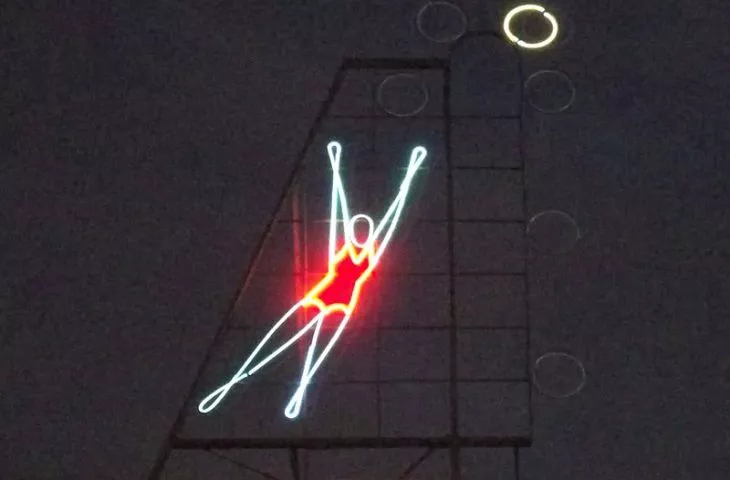Mass public protests against the tightening of abortion laws in Poland, decided by the Constitutional Court on October 22, are still ongoing. But how does this strike choreography affect the scenographic space of the city, which is becoming a playing field for visibility?
The largest demonstrations since Poland's political transformation in 1989, which took place in several hundred cities in Poland and more than a hundred outside the country, could not remain without an impact on urban space and the ways it is perceived. If, following the Slovenian philosopher Slavoj Žižek, one treats architecture as a ventriloquist of ideology, then the symbolism of the protests associated with the All-Polish Women's Strike became what began to infect architectural monoliths. In both smaller and larger cities, in private and public spaces, lightning bolt symbols appeared, indicating support for the demands of the Women's Strike. Handmade posters in the windows of private homes, large banners displayed by public institutions, but also spray-paintings or ephemeral, momentary actions, such as 3D visualizations and lasers on the façade of the National Museum in Krakow during a techno-protest gathering of several thousand people, have become a sign of everyday life that nevertheless stirs unabated emotions.
neon sign with lightning
A good example of this kind of action is the lightning bolt that appeared on the famous "Volleyball Player" neon sign in Warsaw, located on the corner of the building at 5 Constitution Square. "Volleyball Player" shown in a leap with her arms raised and the ball falling down has been here since 1961 and was an advertisement for a former sports store. It was designed by Jan Mucharski and made by the Capital Light Advertising Installation Company. In 2006, unlit and falling into disrepair, it was restored on the initiative of artist Paulina Olowska and the Foksal Gallery Foundation as part of the "Image - Exchange - Neon" exhibition.
© NEON VOLLEYBALL PLAYER
illegal action vs. artistic intervention
The new piece, which was professionally made of glass tubes to form a homogeneous whole along with "Volleyball", was described by the Warsaw Portal, known for its right-wing views, as illegal. It was treated as a partisan action and interference with a finished, historic object, announcing that the matter would be reported to the Mazovian Regional Monument Conservator. Meanwhile, the Foksal Gallery Foundation has dismissed reports of urban partisanship, informing that the lightning bolt is the idea of Paulina Olowska, who, having cared for the neon sign for years, has allocated funds from the sale of her own work for its restoration, with subsequent restorations being handled by the Foundation (the last one took place in 2018).
visibility battlefield
Michal Krasucki, the capital's preservationist, acknowledged that the lightning on the "Gridlock" could be seen as an artistic intervention, as this was also Olowska's goal in expressing her support for the Women's Strike. However, he pointed out that in the case of historical or monumental objects, especially works of art, as the "Volleyball Machine" is considered to be, this type of intervention should not take place without the author's consent. The Foksal Gallery Foundation disagrees with this position, arguing that the neon sign is not a monument and if it were not for the conservation efforts undertaken so far, it would not exist at all. In this way, the hitherto invisible to right-wing circles, "Volleyball" has become a flashpoint and a battlefield for the symbolism used. Nevertheless, the lightning bolt as an important element of the changes taking place in society is to remain on the "Grid" permanently. Lightning in this and many other contexts becomes a kind of revolutionary virus that sometimes for a moment, sometimes for a longer time enters the fabric of the city, changing its appearance and perception. Going back to Žižek - if we consider architecture as a ventriloquist of ideologies, what does architecture infected with new symbols say? Certainly a lot about us as a society increasingly aware of participating in the democratic shaping of space in accordance with its values.















